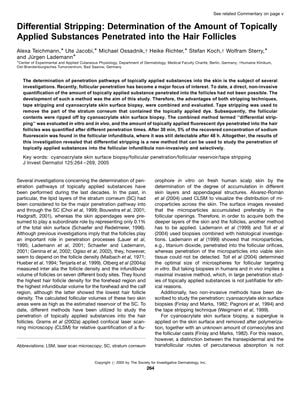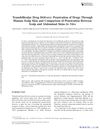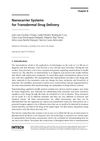Differential Stripping: Determination of the Amount of Topically Applied Substances Penetrated into the Hair Follicles

TLDR The new "differential stripping" method effectively measures how much substance gets into hair follicles.
The study aimed to develop a non-invasive method to quantify the amount of topically applied substances that penetrate into hair follicles. The researchers created a new technique called "differential stripping," which combines tape stripping and cyanoacrylate skin surface biopsy. This method was used to measure the penetration of a fluorescent dye into the follicles both in vitro and in vivo. They found that after 30 minutes, 5% of the applied sodium fluorescein had penetrated into the follicular infundibula, and it remained detectable after 48 hours. The study concluded that differential stripping is an effective method for selectively studying substance penetration into hair follicles.







